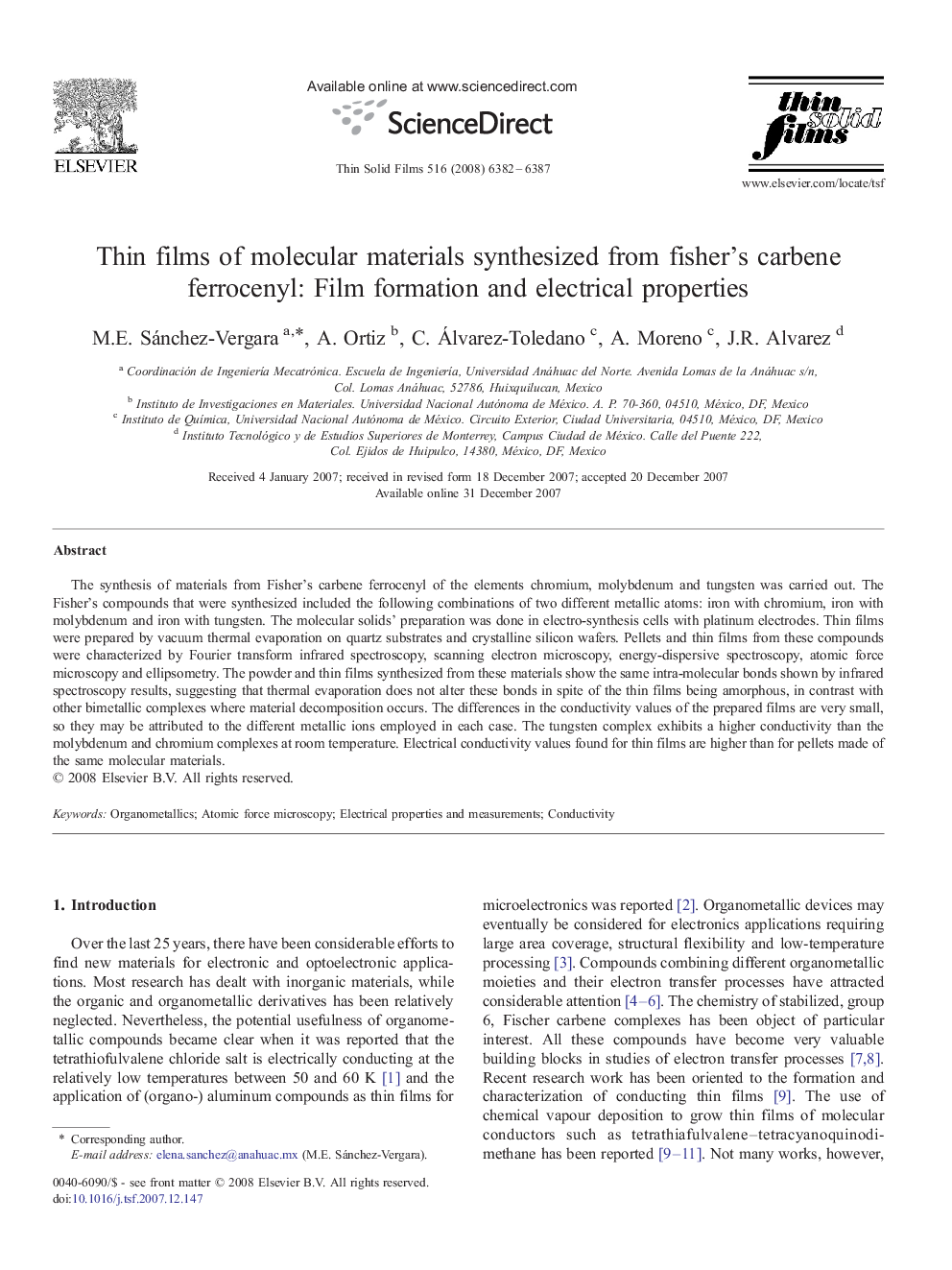| Article ID | Journal | Published Year | Pages | File Type |
|---|---|---|---|---|
| 1672436 | Thin Solid Films | 2008 | 6 Pages |
The synthesis of materials from Fisher's carbene ferrocenyl of the elements chromium, molybdenum and tungsten was carried out. The Fisher's compounds that were synthesized included the following combinations of two different metallic atoms: iron with chromium, iron with molybdenum and iron with tungsten. The molecular solids' preparation was done in electro-synthesis cells with platinum electrodes. Thin films were prepared by vacuum thermal evaporation on quartz substrates and crystalline silicon wafers. Pellets and thin films from these compounds were characterized by Fourier transform infrared spectroscopy, scanning electron microscopy, energy-dispersive spectroscopy, atomic force microscopy and ellipsometry. The powder and thin films synthesized from these materials show the same intra-molecular bonds shown by infrared spectroscopy results, suggesting that thermal evaporation does not alter these bonds in spite of the thin films being amorphous, in contrast with other bimetallic complexes where material decomposition occurs. The differences in the conductivity values of the prepared films are very small, so they may be attributed to the different metallic ions employed in each case. The tungsten complex exhibits a higher conductivity than the molybdenum and chromium complexes at room temperature. Electrical conductivity values found for thin films are higher than for pellets made of the same molecular materials.
